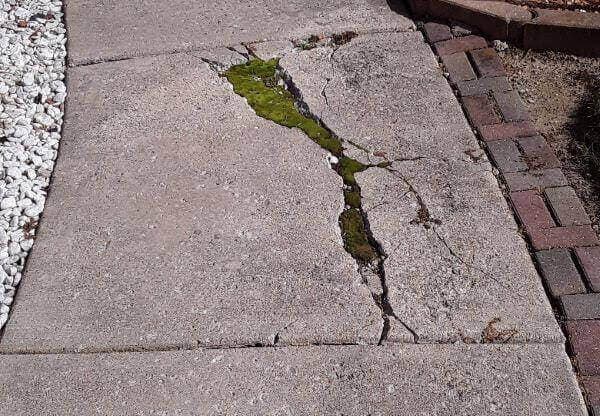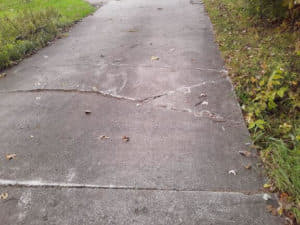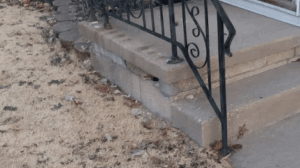When Slabjacking Won’t Work for You: An Illustrated Guide.

Slabjacking is an awesome method for lifting concrete slabs that have sunk into the ground. In a few minutes or a couple of hours, using a polyurethane foam injection, your patio or sidewalk can be brought back up to level. This process makes very little mess and costs significantly less than new concrete.
Acculevel has been repairing and waterproofing foundations since 1996. We have repaired thousands of concrete slabs over the years and in our experience, slabjacking is the most reliable method. (Full disclosure: we previously used the mudjacking method. After a great deal of research, we transitioned to slabjacking in 2015.)
We’ve written about slabjacking before, in articles about what causes a slab to sink. We’ve also compared different repair methods and their respective costs.
There is one common question we often encounter that we haven’t addressed yet, and there are multiple variations on the same theme.
- Is slabjacking a good fit for me?
- Will slabjacking work for my patio/driveway/porch?
- How do I know if slabjacking will fix my slab?
- When is it best to replace the slab?
If any of these sound familiar, this is the guide for you. The following are images that clearly demonstrate when slabjacking is NOT a good fit, and you should have the concrete replaced.
This Guide is Not Written in Concrete
Yes, it’s a bad joke and I’m sorry. (But not so sorry that I didn’t include it.)
If one of the following example photos looks familiar to you, this doesn’t mean you shouldn’t contact us, or that we don’t want to meet with you. Before your appointment, a contractor should call to review your concerns, and when possible, review photos you’ve taken of the problem areas.
This ‘pre-call’ method ensures that you and your contractor are on the same wavelength and that they can be sure to address all of your questions and concerns.
All of the photos used in this article were taken by Acculevel project managers, while they were on routine free estimate appointments.
The Examples
In this example, the slab has too many cracks. Lifting this slab can cause more splitting and widen the cracks. Each crack creates a separate piece of concrete, and when you have multiple pieces it becomes difficult to keep them aligned with one another. 
This walkway has too many cracks, and the center crack is too wide to repair with good results.
This is a porch that is sinking- but cannot be slabjacked because the concrete is deteriorating. A hole is clearly visible between the first and second stair.
There are some additional circumstances that may preclude slabjacking. We explore those in a companion piece, What Are the Biggest Problems with Slabjacking?
Should You Still Make An Appointment?
If slabjacking is not a good fit, should you still have a contractor come to your home for an appointment? Possibly! Evaluate the area where the concrete is settling. Is it in a location that may also be damaging other areas of your home’s structure or foundation? The closer the slab is to your house, the more likely it is that you have other issues. A sinking or sloping concrete slab can direct water towards your house, instead of away from it.
Erosion and poorly compacted soil are the primary causes of sinking concrete. And as the slab settles, it begins to slope and collect water. This is what leads to water pooling around your home’s foundation.
Water can have a devastating effect on a home. Water in your crawl space can rot the floor joists, water in the crawl space or basement will feed mold, and hydrostatic pressure against the foundation will cause cracks and bowing walls.
Have you seen any signs of water damage, foundation cracks, sagging floors, or smelled musty odors? These are signs of other issues that need evaluating. We have a free tool that can help you assess your symptoms.
I would also like to recommend that all homeowners check out the DIY Home Inspection Checklist that we have created. It’s modeled after the 21 Point Inspection Plan we perform in our customers’ homes, and will guide you through performing your own foundation inspection. We recommend that homeowners review their foundation twice per year, to watch for any developing problem areas.
If You Have Any Symptoms, You Should Make an Appointment.
Find an experienced foundation or waterproofing company. Before you sign a contract for any service, you should always verify the contractor is reputable, insured, and accredited by the Better Business Bureau.
If you live in Indiana or the surrounding states, contact Acculevel. Established in 1996, we specialize in foundation repairs. An experienced project manager will evaluate the sections of concern and recommend the best course of action for you, to keep your home strong and healthy for years to come.
